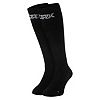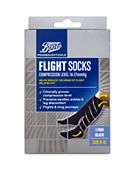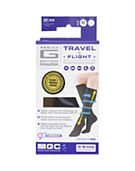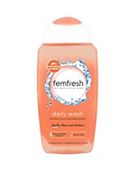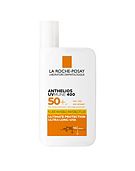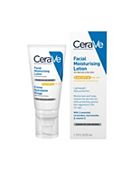CRX Compression Socks 9-12
Save up to 1/2 price on active living and running - online only
In order to buy non-prescription medicines you must be a registered user of our site as we are obliged to record your transaction history. We also ask that you complete our questionnaire so our pharmacy team can check that this product is suitable for you to buy.
You cannot add this item to the customer's basket
Disabled or chronically sick people can claim VAT relief on purchases for personal or domestic use that are applicable to their disability or sickness.
Stock coming soon
This product is temporarily unavailable online. Use ‘Find in store’ below to see if it’s in stock near you.
 Product details
Product details
- Improves blood circulation
- Relieves pain and fatigue
- Promotes and supports vein health
- Reduces swelling in the legs and ankles
- Prevents blood clots in the legs
- Prevents and soothe venous ulcers, varicose veins, and spider veins
Blood Circulation
Blood circulation is critical to maintaining optimal health, irrespective of age. It allows every organ to function properly, it helps us recover quicker, keeps our brain sharp and our heart healthy. Your feet and lower legs are the parts of your body that are furthest away from your heart. This means that gravity does a great job of pulling blood down into these extremities, but returning it back to the heart, against gravity, requires a lot more effort. Your veins are tasked with this duty and there are several conditions that can compromise this function. Inefficient circulation in your legs can cause pain and fatigue, swelling, and can compromise your vein health. CRX compression socks are a great tool to improve blood flow in your feet and legs, helping you to perform, recover quicker and feel better.
How Do Compression Socks Work?
CRX Compression socks work by applying pressure on the veins and tissues in your feet and legs to optimize blood flow, or circulation. They are graduated, applying stronger pressure on the feet and lower legs and more gentle pressure as they move up the leg.
The level of pressure they apply is measured in units called mmHg (millimetres of mercury). Most Over-the-counter compression socks will offer 14-17 mmHg (Level 1), but CRX socks offer 18-24 mmHg (Level 2), the level doctors prescribe.
Who Can Benefit From Compression Socks?
- People On The Go: Anyone who spends a significant portion of their day on their feet, standing or moving, can avoid swelling and fatigue and increase their comfort with compression socks.
- Travellers: Extended periods of inactivity while travelling by car, train or plane can compromise your circulation and increase your risk of developing DVT, or deep vein thrombosis. Research suggests that wearing compression socks during travel can reduce this risk and support your vein health.
- Athletes: Compression socks are increasingly sought after by athletes wishing to improve athletic performance and relieve post-workout discomfort and fatigue. Many athletes choose to use compression socks both during and after training and competition
- Pregnant Women: Increased blood volume during pregnancy can put some women at increased risk for leg and ankle swelling, impaired circulation, and varicose veins. Compression socks can reduce this risk and can ease discomfort.
- People With Certain Medical Conditions: People who are at increased risk of blood clots in the legs, also known as deep vein thrombosis, due to family history, genetic disorders, surgery, injury, certain medications, or prolonged inactivity such as bed rest can benefit from the increased circulation promoted by compression socks. People with venous ulcers, and varicose and spider veins can find symptom relief and vein support with compression socks, especially while recovering from treatment.
Suitable for
Suitable for Adult Children 16+
Hazards and Cautions
When not to wear compression socks
Contraindications in the medical world are situations in which something should not be prescribed or recommended. If you have any of the following, compression socks may not be right for you:
- Ischaemia: This is a lack of oxygen in the limbs due to peripheral arterial disease, particularly affecting your legs.
- Peripheral neuropathy: This is damage to the nerves in your hands, arms, feet and legs.
- Congestive heart failure: This arises when the heart muscle becomes weak or stiff and cannot pump blood around the body efficiently. It causes a build – up of fluid – oedema in the legs.
- Diabetes: Peripheral arterial disease and peripheral neuropathy are both complications of diabetes.
- Cellulitis: An infection deep within the skin that causes fluid build-up – oedema.
- Allergies: Some people can be allergic to components used to make compression garments. Skin reactions do occur – sometimes these can be solved by using a different brand or type, but if you are allergic to compression garments, wearing them will put you at risk of skin breaks and infection.
Important info
Manufactured in Portugal. Imported/Distributed by CRX Compression Ltd, Tudor House, 16 Cathedral Road, Cardiff, United Kingdom, CF11 9LJ
Ingredients
90% Polyamide 10% Elastane
Delivery options
Click & Collect
£1.50 or free if you spend £15 or more from your choice of 1,800 stores.
Standard Delivery
£3.95 or free when you spend £25 or more.
Next Day Delivery
Order by 10pm (subject to change during promotions), available 7 days a week for £4.95. This may not be available during public holidays or weekends in between public holidays. To be eligible for Next Day Delivery, Pharmacy Medicines must be ordered by 8pm.
Airport Click & Collect
£4.50 - Select a delivery date 3 days before your flight.
Named Day Delivery
£4.75 - choose a weekday within the next 14 days for delivery.
For more information see our delivery help or view our returns policy.
Customers who viewed this product went on to buy
Buy 1 get 2nd 1/2 price …
£14.20
1 UNI|£14.20 per 1UNI
Category top sellers
2 for £4.50 on selected …
£2.75
250 ML|£1.10 per 100ML
Save 20 percent on selec…
£20.00
50 ML|£40.00 per 100ML
Save 25 percent on selec…
£16.50
50 ML|£33.00 per 100ML
